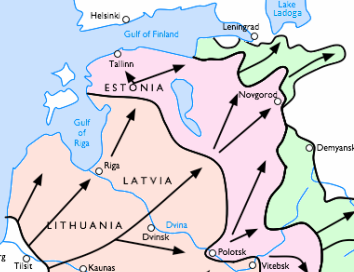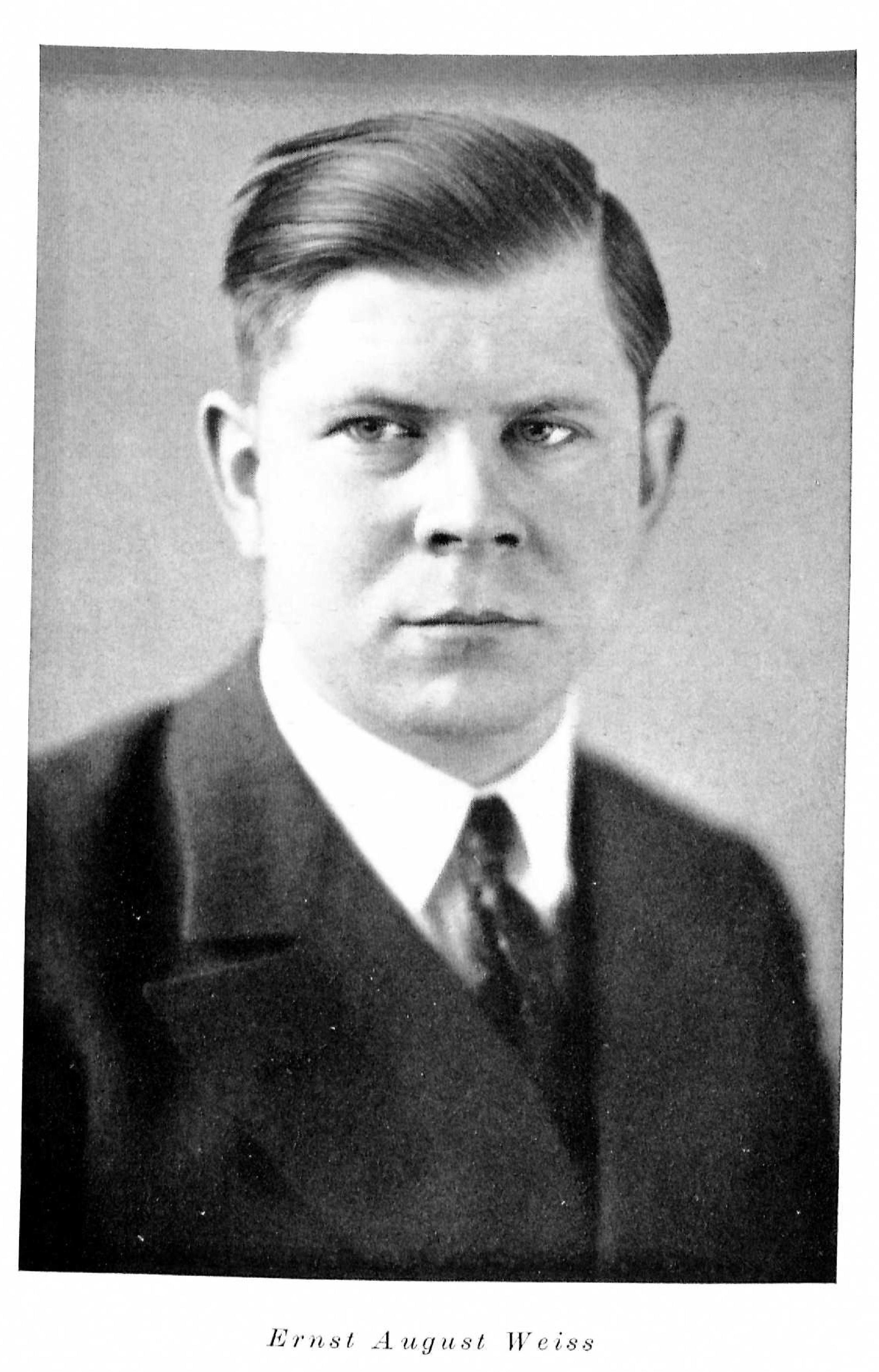|
Kaiserin Augusta Gymnasium
The Kaiserin-Augusta-Gymnasium was a German school based in Charlottenburg, a locality of Berlin. It started in 1818 as a private school, founded by Ludwig Cauer. In 1869, it expanded and became a gymnasium. In 1876 it was named after Empress Augusta, wife of William I. After World War II it merged with the Mommsen-Gymnasium. A new building was erected in 1956 and a new name was given, Erich-Hoepner-Gymnasium after Erich Hoepner. Since 2008, the name of the school is Heinz-Berggruen-Gymnasium after Heinz Berggruen. Notable alumni *Hermann Brück *Max Weber *Wilhelm Cauer Wilhelm Cauer (24 June 1900 – 22 April 1945) was a German mathematician and scientist. He is most noted for his work on the analysis and synthesis of electrical filters and his work marked the beginning of the field of network synthesis. Prio ... * Ernst August Weiß References External links"Die Geschichte unserer Schule" Ludwig Cauer Grundschule official site (in German), accessed an29 July 2012."Lud ... [...More Info...] [...Related Items...] OR: [Wikipedia] [Google] [Baidu] |
Charlottenburg
Charlottenburg () is a Boroughs and localities of Berlin, locality of Berlin within the borough of Charlottenburg-Wilmersdorf. Established as a German town law, town in 1705 and named after Sophia Charlotte of Hanover, Queen consort of Kingdom of Prussia, Prussia, it is best known for Charlottenburg Palace - the largest surviving such royal palace in Berlin - and the adjacent museums. Charlottenburg was an independent city to the west of Berlin until 1920 when it was incorporated into "Greater Berlin Act, Groß-Berlin" (Greater Berlin) and transformed into a borough. In the course of Berlin's 2001 administrative reform it was merged with the former borough of Wilmersdorf becoming a part of a new borough called Charlottenburg-Wilmersdorf. Later, in 2004, the new borough's districts were rearranged, dividing the former borough of Charlottenburg into the localities of Charlottenburg proper, Westend (Berlin), Westend and Charlottenburg-Nord. Geography Charlottenburg is located in ... [...More Info...] [...Related Items...] OR: [Wikipedia] [Google] [Baidu] |
Berlin
Berlin ( ; ) is the Capital of Germany, capital and largest city of Germany, by both area and List of cities in Germany by population, population. With 3.7 million inhabitants, it has the List of cities in the European Union by population within city limits, highest population within its city limits of any city in the European Union. The city is also one of the states of Germany, being the List of German states by area, third smallest state in the country by area. Berlin is surrounded by the state of Brandenburg, and Brandenburg's capital Potsdam is nearby. The urban area of Berlin has a population of over 4.6 million and is therefore the most populous urban area in Germany. The Berlin/Brandenburg Metropolitan Region, Berlin-Brandenburg capital region has around 6.2 million inhabitants and is Germany's second-largest metropolitan region after the Rhine-Ruhr region, as well as the List of EU metropolitan areas by GDP, fifth-biggest metropolitan region by GDP in the European Union. ... [...More Info...] [...Related Items...] OR: [Wikipedia] [Google] [Baidu] |
Ludwig Cauer (educator)
Ludwig Cauer (28 May 1866, Bad Kreuznach - 27 December 1947, Bad Kreuznach) was a German sculptor. Life He was born into a family of sculptors who operated a workshop founded by his grandfather Emil Cauer the Elder. After Emil died in 1867, his father Karl and uncle Robert took over the studio and, when he was old enough, he received his first training there along with his brothers Emil, Robert and Hugo (1864-1918), who would also become sculptors of some note. At the age of fifteen, his father took him on a study trip to Rome. After his father died in 1885, he went to Berlin, where he worked in the studios of Albert Wolff and Reinhold Begas, passing the craftsman examination at Koblenz in 1887. This was followed by a year of military service. He spent the years 1891 to 1893 in London then, after a brief stay in Bad Kreuznach, lived in Berlin from 1895 to 1905. During that time, he worked on the Siegesallee (Victory Avenue) project of Wilhelm II, also producing statues for foun ... [...More Info...] [...Related Items...] OR: [Wikipedia] [Google] [Baidu] |
Augusta Of Saxe-Weimar-Eisenach
Augusta of Saxe-Weimar-Eisenach (Born ''Princess'' ''Maria Luise Augusta Katharina of Saxe-Weimar-Eisenach''; 30 September 1811 – 7 January 1890), was Queen of Prussia and the first German Empress as the wife of William I, German Emperor. A member of the Grand Ducal House of Saxe-Weimar-Eisenach and closely related to the Russian Imperial House of Romanov through her mother Grand Duchess Maria Pavlovna, in June 1829, Augusta married Prince William of Prussia. The marriage was tense; Wilhelm actually wanted to marry his cousin, Elisa Radziwiłł, who was judged to be unsuitable by the Prussian court, and the political views and intellectual interests of the two spouses were also far apart. Despite personal differences, Augusta and William often worked together to handle correspondence and social gatherings at court. In 1831 and 1838, they had two children, Frederick William and Louise. After the death of her father-in-law King Frederick William III of Prussia in 1840, Augu ... [...More Info...] [...Related Items...] OR: [Wikipedia] [Google] [Baidu] |
Erich Hoepner
Erich Kurt Richard Hoepner (14 September 1886 – 8 August 1944) was a German general during World War II. An early proponent of mechanisation and armoured warfare, he was a Wehrmacht Heer army corps commander at the beginning of the war, leading his troops during the invasion of Poland and the Battle of France. Hoepner commanded the 4th Panzer Group on the Eastern Front during Operation Barbarossa, the invasion of the Soviet Union in 1941. During the invasion of Poland, he resisted mistreatment and murder of prisoners of war, but in Russia, Hoepner called for a war of extermination. Units under his authority closely cooperated with the ''Einsatzgruppen'' and he implemented the Commissar Order that directed Wehrmacht troops to summarily execute Red Army political commissars immediately upon capture. Hoepner's Panzer group, along with the 3rd Panzer Group, spearheaded the advance on Moscow in Operation Typhoon, the failed attempt to seize the Soviet capital. Dismissed fro ... [...More Info...] [...Related Items...] OR: [Wikipedia] [Google] [Baidu] |
Heinz Berggruen
Heinz Berggruen (January 6, 1914 – February 23, 2007) was a German and American art dealer and collector who sold 165 works of art to the German federal government to form the core of the Berggruen Museum in Berlin, Germany. He was the father of John, Olivier and Nicolas Berggruen. Early life and education Berggruen was born in Wilmersdorf, Berlin to Jewish parents: Ludwig Berggruen, a businessman who owned an office supply business before the war, and Antonie (née Zadek).John Green (May 23, 2007)Heinz Berggruen''The Guardian''. He attended the Goethe-Gymnasium in Wilmersdorf and graduated from the Friedrich-Wilhelms (now Humboldt) University in 1932, where he read literature. After 1933, he continued his studies at the universities of Grenoble and Toulouse.Heinz Be ... [...More Info...] [...Related Items...] OR: [Wikipedia] [Google] [Baidu] |
Hermann Brück
Hermann Alexander Brück CBE FRSE (15 August 1905 – 4 March 2000) was a German-born astronomer, who spent the great portion of his career in various positions in Britain and Ireland. Education Hermann Brück was born in Berlin. His father was Hermann Heinrich Brück and his mother, Margaret. Young Hermann was educated at the Kaiserin Augusta Gymnasium in Berlin-Charlottenburg, a school specialising in the Classics (Latin and Greek), where he also had excellent teachers in mathematics and physics. From 1924-28, Brück was educated at the University of Kiel, the University of Bonn, and the Ludwig Maximilian University of Munich. His doctoral work on the wave mechanics of crystals was under the supervision of Arnold Sommerfeld. His interest in astronomy came early in life, and he turned his attention to astronomical spectroscopy. He was granted his PhD at Munich in 1928. [...More Info...] [...Related Items...] OR: [Wikipedia] [Google] [Baidu] |
Max Weber
Maximilian Carl Emil Weber (; ; 21 April 186414 June 1920) was a German Sociology, sociologist, historian, jurist, and political economy, political economist who was one of the central figures in the development of sociology and the social sciences more generally. His ideas continue to influence social theory and social research, research. Born in Erfurt in 1864, Weber studied law and history in Humboldt University of Berlin, Berlin, University of Göttingen, Göttingen, and Heidelberg University, Heidelberg. After earning his doctorate in law in 1889 and habilitation in 1891, he taught in Berlin, University of Freiburg, Freiburg, and Heidelberg. He married his cousin Marianne Weber, Marianne Schnitger two years later. In 1897, he had a breakdown after Max Weber Sr., his father died following an argument. Weber ceased teaching and travelled until the early 1900s. He recovered and wrote ''The Protestant Ethic and the Spirit of Capitalism''. During the First World War, he initia ... [...More Info...] [...Related Items...] OR: [Wikipedia] [Google] [Baidu] |
Wilhelm Cauer
Wilhelm Cauer (24 June 1900 – 22 April 1945) was a German mathematician and scientist. He is most noted for his work on the analysis and synthesis of electrical filters and his work marked the beginning of the field of network synthesis. Prior to his work, electronic filter design used techniques which accurately predicted filter behaviour only under unrealistic conditions. This required a certain amount of experience on the part of the designer to choose suitable sections to include in the design. Cauer placed the field on a firm mathematical footing, providing tools that could produce exact solutions to a given specification for the design of an electronic filter. Cauer initially specialised in general relativity but soon switched to electrical engineering. His work for a German subsidiary of the Bell Telephone Company brought him into contact with leading American engineers in the field of filters. This proved useful when Cauer was unable to feed his children during the ... [...More Info...] [...Related Items...] OR: [Wikipedia] [Google] [Baidu] |
Ernst August Weiß
Ernst August Weiß (or Weiss; 5 May 1900 in Strasbourg – 9 February 1942 in a Nazi field hospital near Lake Ilmen) was a German mathematician. Early life and education Since 1906, he attended the Lyceum in Metz, the Luther school and (1910–1912) Schiller gymnasium in Münster, and 1912–1917 the Mommsen-Gymnasium in Berlin, where he passed the Notabitur. He volunteered for the German military engineers in World War I, participated in the attrition warfare near Reims and Soissons and was captured 26 September 1918 during the tank battle near Cheppy by American soldiers. After his release in September 1919 he studied mathematics at Leibniz University Hannover and (1920–1924) Bonn University, where he obtained a Ph.D. in March 1924 and a habilitation in May 1926. In August 1926, he married the physicist Eva Renate Bidder. Work in SA Weiß joined an SA storm in Bonn in 1933, and got promoted up to an Obertruppführer. He directed the Bonn Studentenwerk. He created the Mat ... [...More Info...] [...Related Items...] OR: [Wikipedia] [Google] [Baidu] |
Schools In Berlin
A school is the educational institution (and, in the case of in-person learning, the building) designed to provide learning environments for the teaching of students, usually under the direction of teachers. Most countries have systems of formal education, which is sometimes compulsory. In these systems, students progress through a series of schools that can be built and operated by both government and private organization. The names for these schools vary by country (discussed in the '' Regional terms'' section below) but generally include primary school for young children and secondary school for teenagers who have completed primary education. An institution where higher education is taught is commonly called a university college or university. In addition to these core schools, students in a given country may also attend schools before and after primary (elementary in the U.S.) and secondary (middle school in the U.S.) education. Kindergarten or preschool provide some sch ... [...More Info...] [...Related Items...] OR: [Wikipedia] [Google] [Baidu] |








